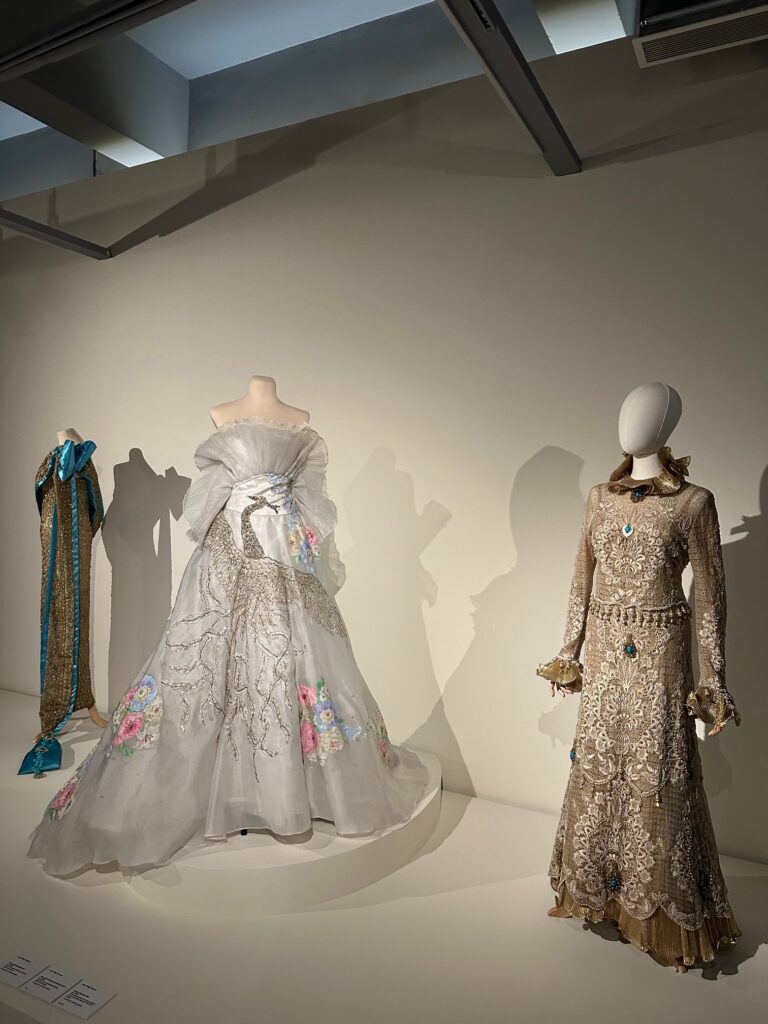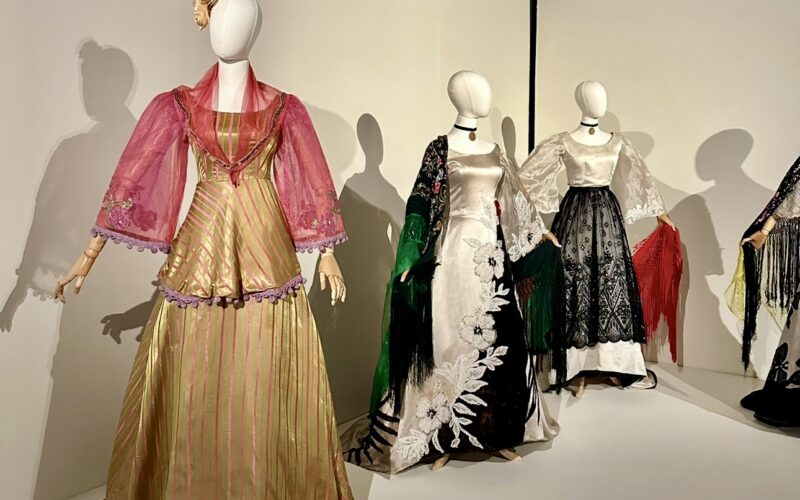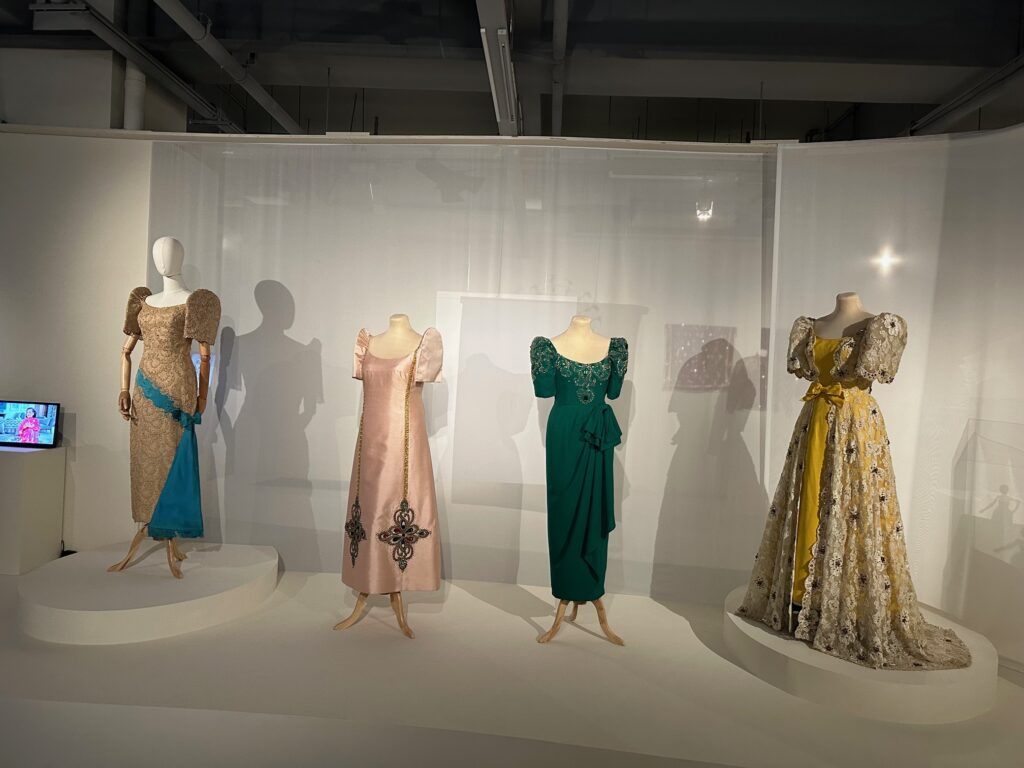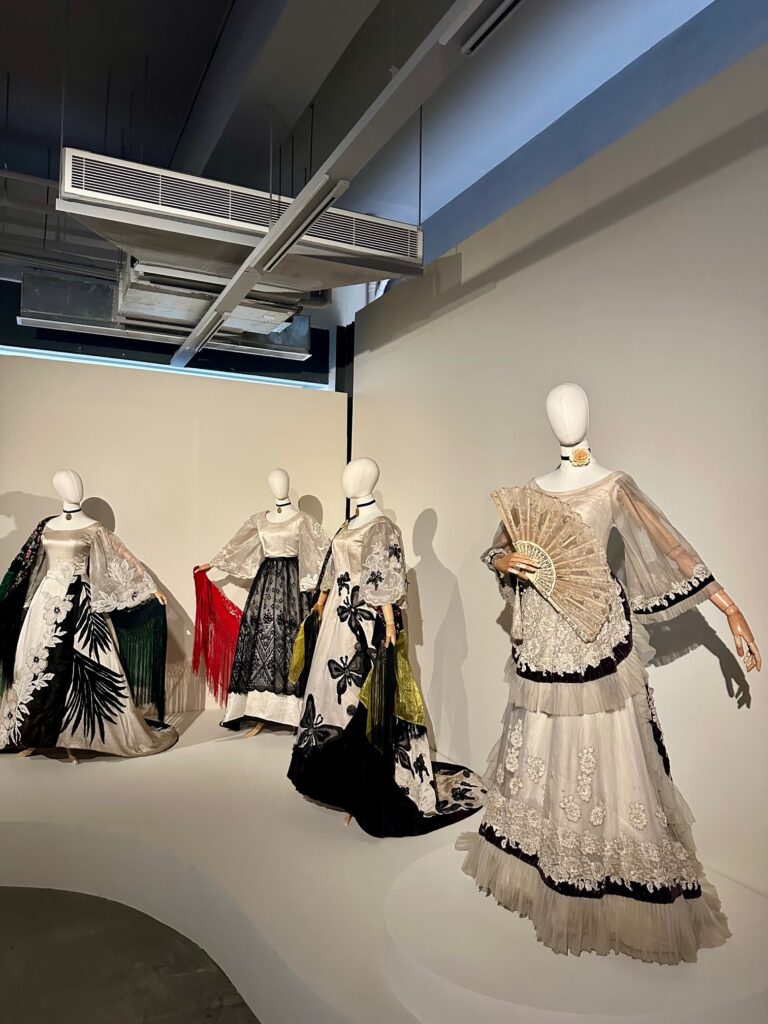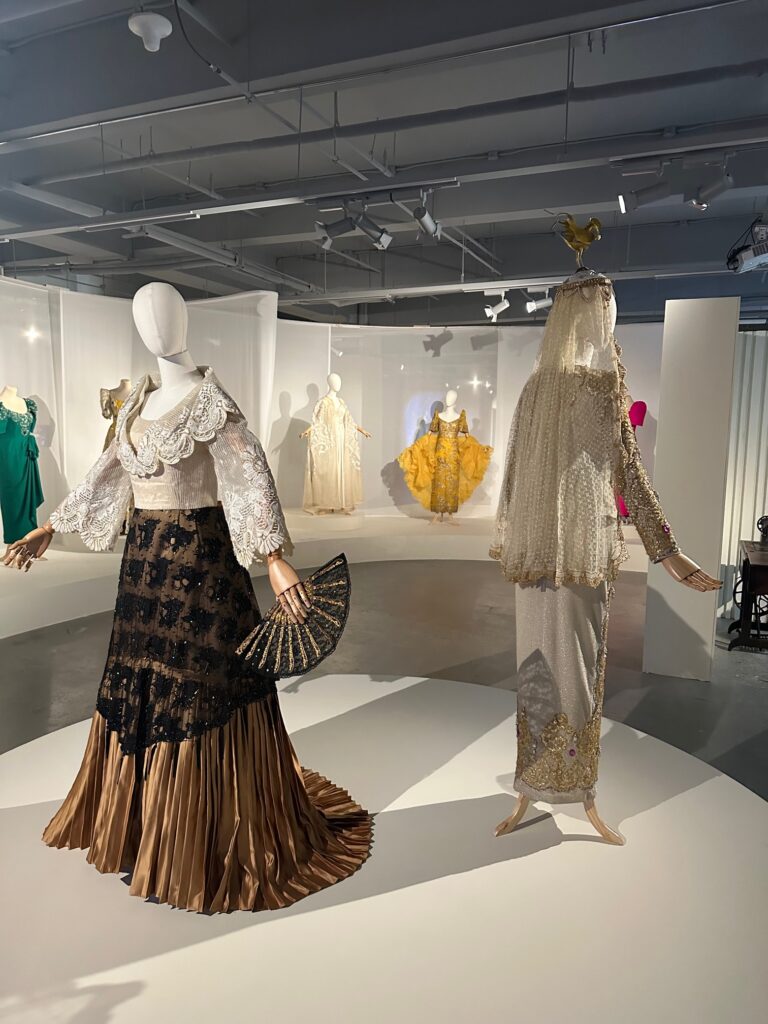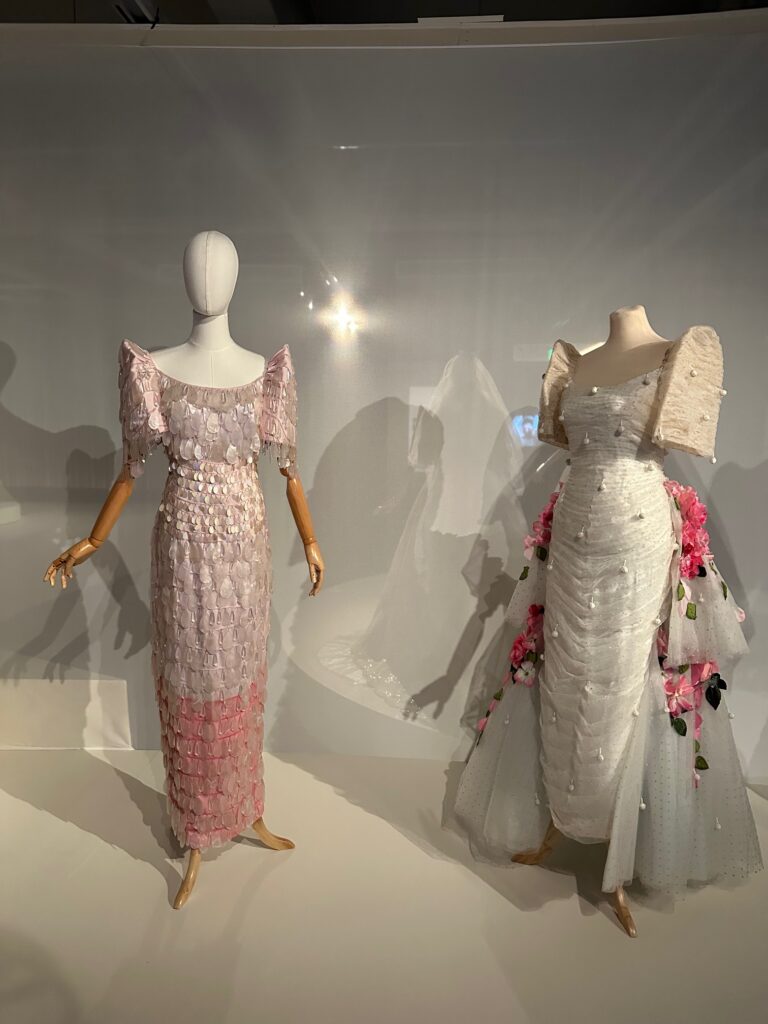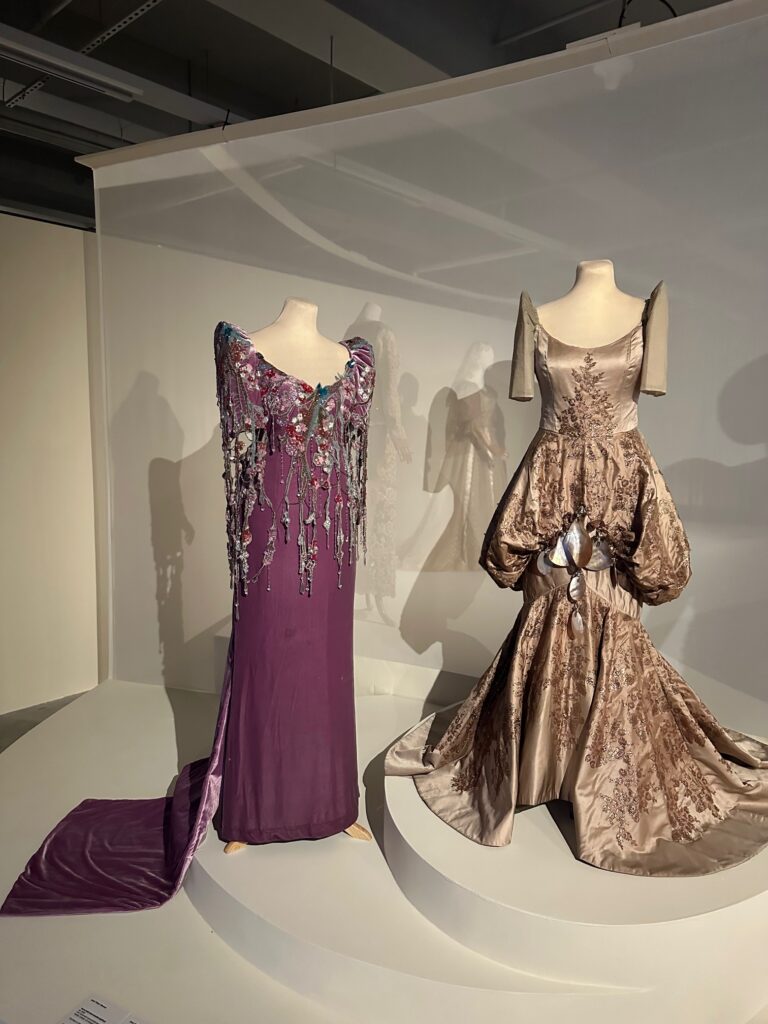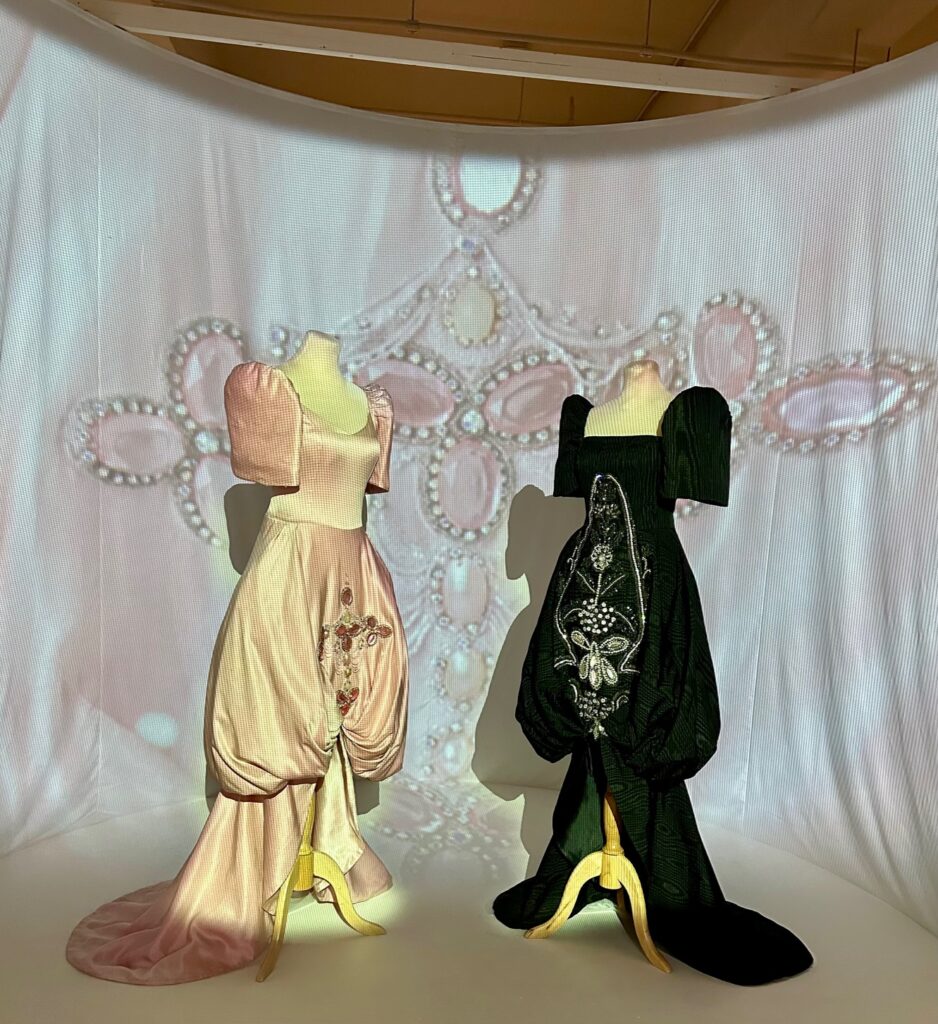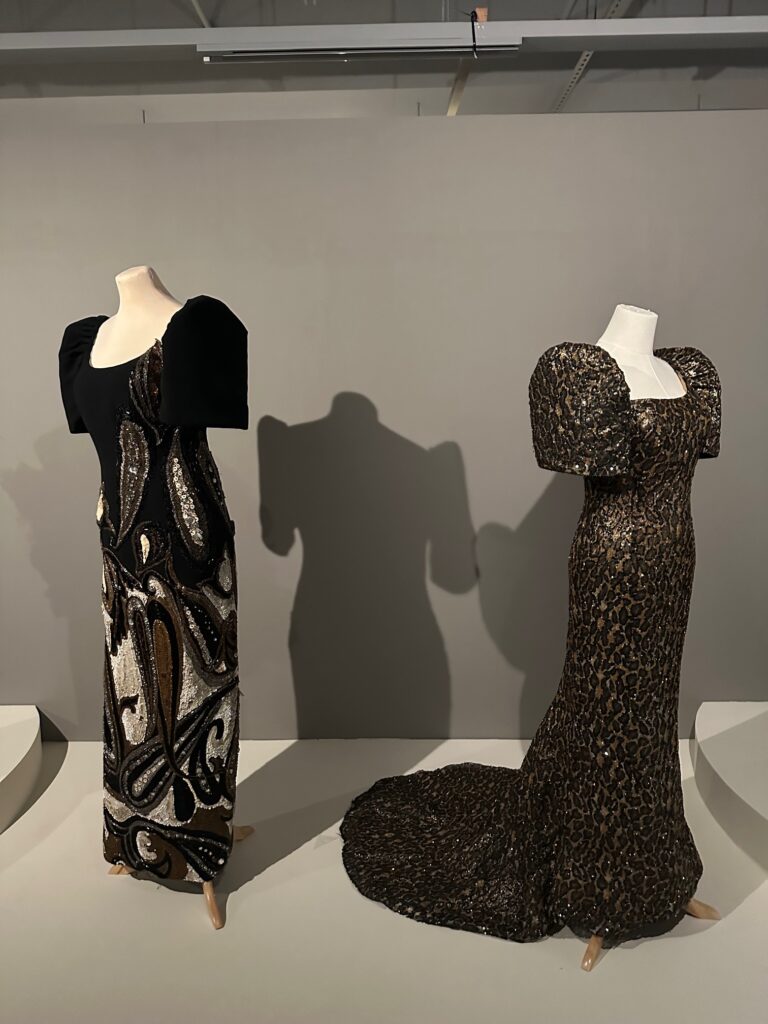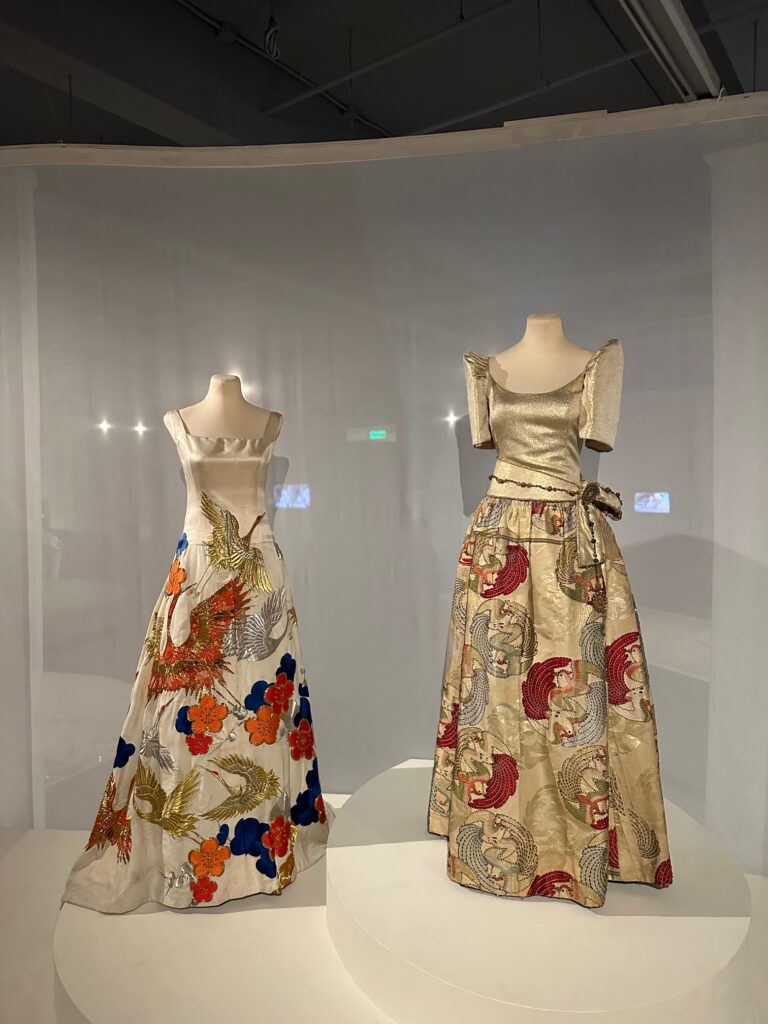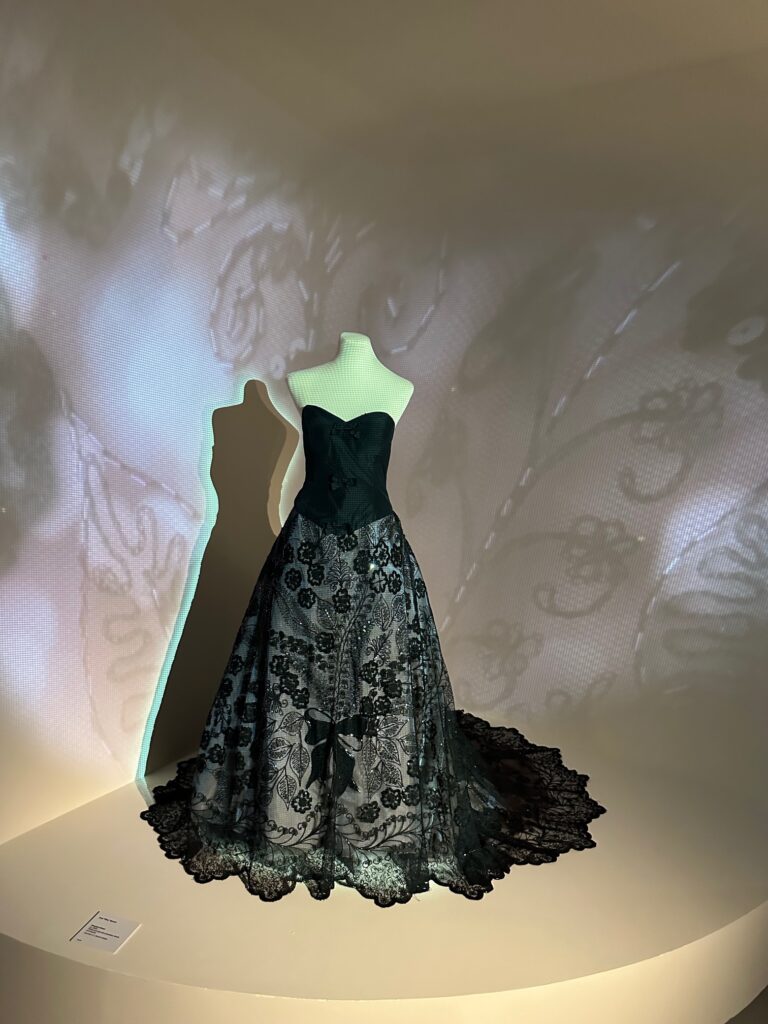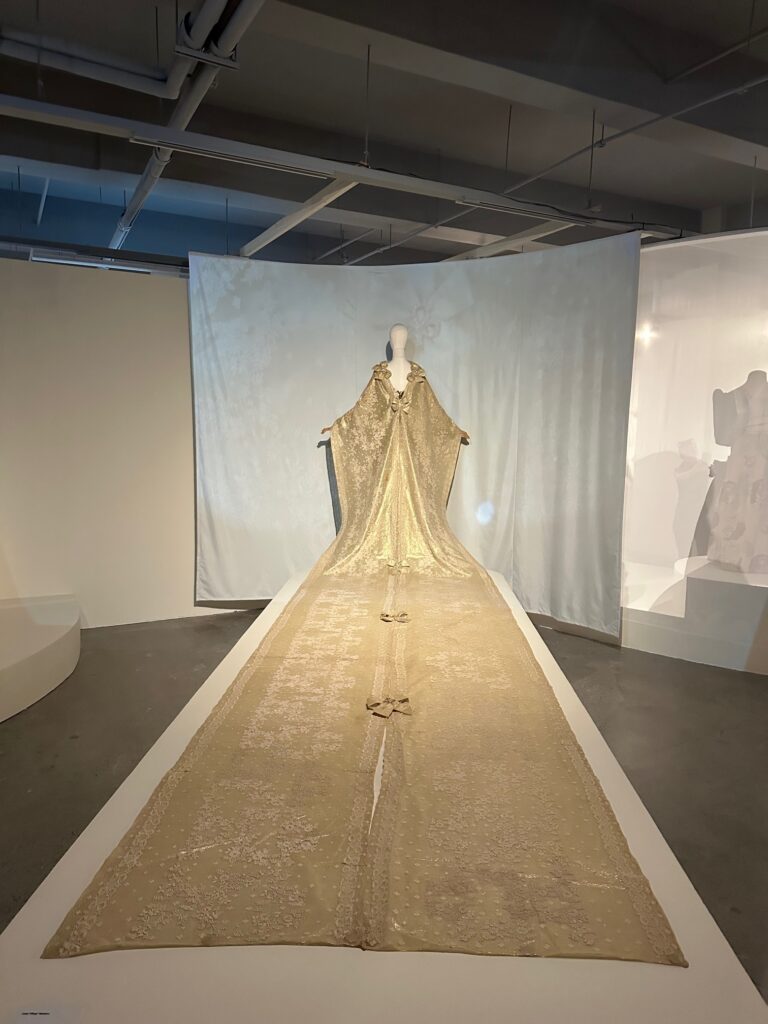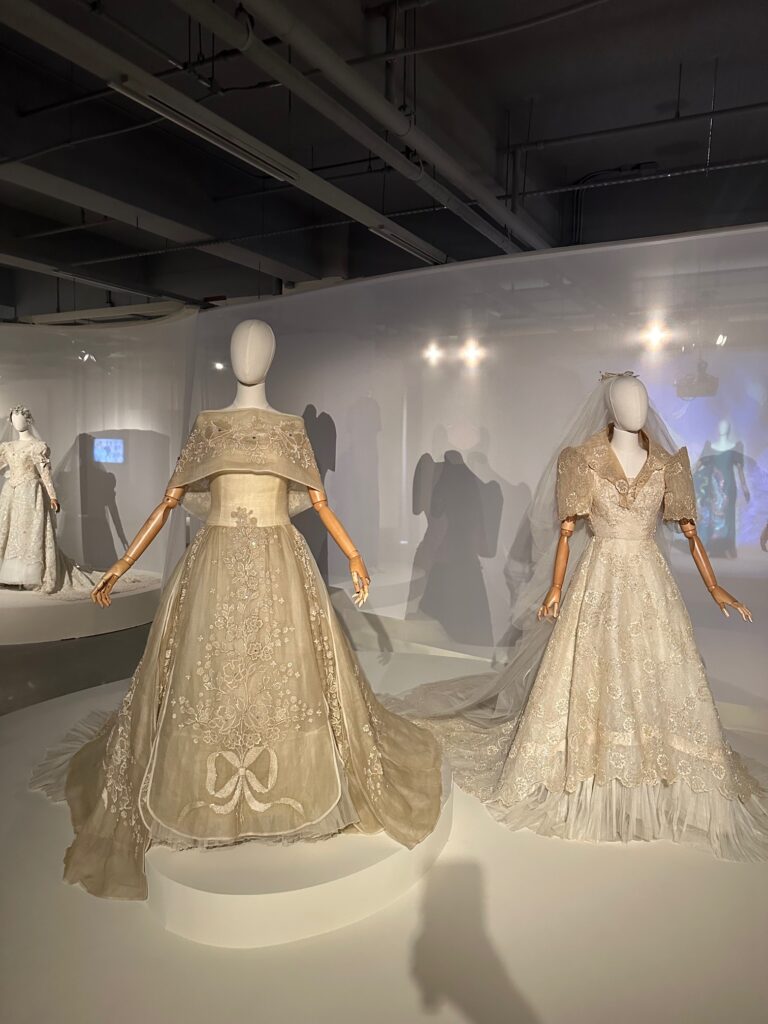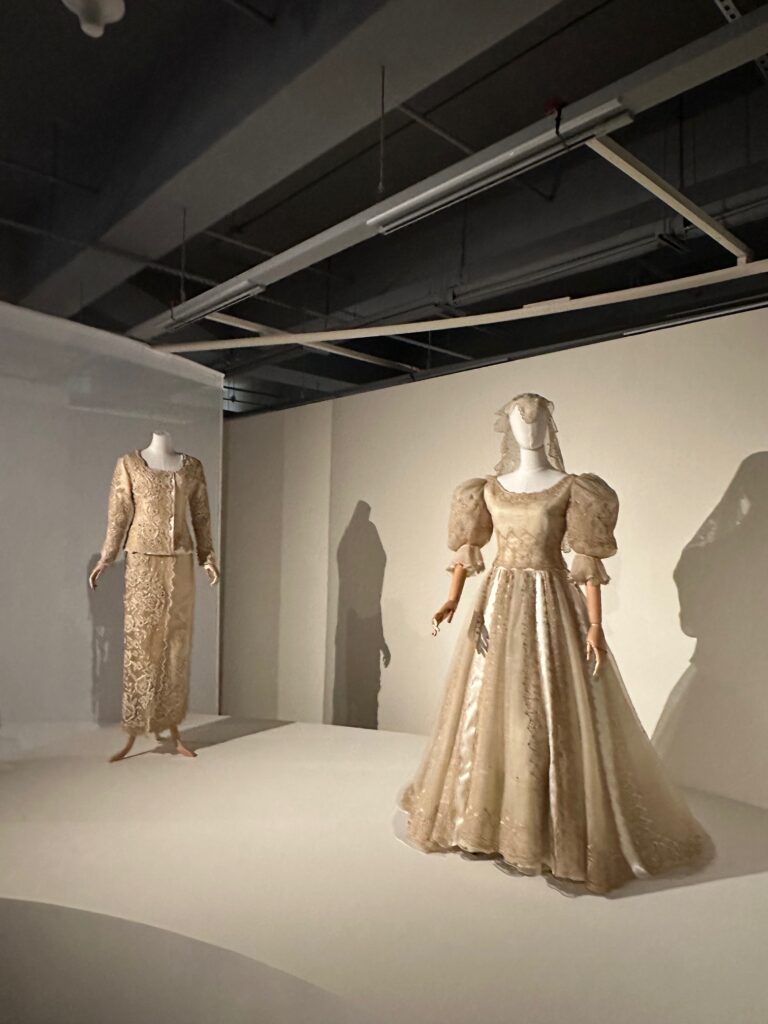Ongoing until June 29 at the Metropolitan Museum of Manila’s North Gallery in BGC, Timeless: J. Moreno is as much a visual narration of his genius as it is about his fervent desire to define what being Filipino was through his fashion.
Text and photos by ALEX Y. VERGARA
Like most fashion designers, past and present, the late Jose “Pitoy” Moreno (February 25, 1925–January 15, 2018) had the uncanny ability of absorbing and distilling everything he saw, heard and even felt, and translating them into exquisite dresses and costumes that would appeal to an elite clientele as well as society’s movers and shakers—from movie queens to first ladies, singers and dancers to high-profile socialites.
But what separated Pitoy from a good number of his contemporaries, elevating him from being not just a good designer, but an influential one in the eyes of today’s fashion historians is laid out for all to see in Timeless: J. Moreno, a fashion retrospective of some of the couturier’s best pieces that have withstood the test of time.
Ongoing until June 29 at the Metropolitan Museum of Manila’s North Gallery in BGC, the exhibit, which commemorates Pitoy’s 100th birth anniversary, is as much a visual narration of his genius as it is about his fervent desire to define what being Filipino was through his fashion. It also reveals in part the genesis of this desire, which exhibit curators Nina Baker and Ditas Samson attribute to events that transpired before, during and immediately after Pitoy’s coming of age.
Brave new world
“Like many of his contemporaries who later made a name for themselves in their respective fields, Pitoy lived through the war and experienced firsthand the hardships it brought,” said Samson. “Having survived it and the Philippines’ transition to becoming a fully independent country, there was this brave new world out there that they were all raring to recreate.”
Thus, Filipinos saw a flowering of Philippine modern art, architecture and even fashion, post-war. Pitoy was not just an exponent of what was in vogue then. Like most creatives of the day, he sought to identify and define what the Filipino identity was.
Samson and Baker collaborated with the Los Angeles County Museum of Arts’ (LACMA) Clarissa Esguerra, the exhibit’s technical and curatorial consultant, in putting up Timeless as early as two years ago. Most of the clothes on display came from Pitoy’s studio in Malate, while a few pieces are on loan, particularly from the Bayanihan Foundation and the heirs of the late former First Lady Eva Macapagal.
“Pitoy and the artists of his generation had something in common,” said Baker. “It was their preoccupation with nationality. In other words, they were trying to shed colonialism and create a new identity. That’s why, I think, more than any other couturier, he was obsessed with being Filipino and projecting this, not just locally, but also overseas. In all his interviews, he would always say ‘I’m a Filipino designer and I want to be known as a Filipino designer.’”
At one point, the University of the Philippines-educated Pitoy, whose contemporaries included artists Juvenal Sanso and Araceli Dans, and stage actress Celia Diaz- Laurel, among others, even went on to say, “Everything I do, I do for my country. This is not about me. This is about my country.”
Always with a Filipino twist
And even if he used European fabrics and drew inspiration from Parisian runways to fashion his pieces, Pitoy would consciously combine them with Filipino-made materials such as piña and jusi as well as the handiwork of the country’s craftspeople–from the embroidery down to the beadwork, including the use of, say, Capiz shells and tribal weaves and accessories.
The exhibit, which is divided into several suites, including the costumes he created during his salad days as a designer for Bayanihan, several formal wear for Macapagal and wedding gowns that became the prototype of those he did for real brides, is likely as accurate a representation as one could get of Pitoy’s long and illustrious career, which spanned the mid 1950s to the late 2000s
Through his collaboration with Isabel Santos, the costume director of Bayanihan, the then virtually unknown Pitoy learned a lot, opening his eyes to a wealth of locally available materials, inspirations and techniques that were needed if he was to create fairly accurate as well as functional and practical costumes for the country’s pioneer and premier traveling dance group.
While Isabel had the vision, having already done extensive research and fieldwork before their collaboration, Pitoy, who absorbed everything like a sponge, made that vision into reality.
“And that initial exposure eventually trickled down into his designs as he did his high fashion version of the terno, Maria Clara and even the singkil princess for members of high society,” said Baker.
So much so, that when Pitoy became the “official” designer of Malacañang during the administration of President Diosdado Macapagal in the early 1960s, he was already an established name in fashioning Filipiniana finery teeming with Western flair.
Although as former President Gloria Macapagal-Arroyo, in a video message, said, Pitoy had been making clothes for the Macapagal women even before her father became president.
From Bayanihan to Karilagan
Sometime after Pitoy started collaborating with Bayanihan, the late socialite and civic leader Conchita Sunico, an ardent supporter of the arts, “piggybacked,” as Baker described it, on the Bayanihan tours before starting Karilagan, a regular fashion show staged at the then Manila Hilton featuring the creations of members of The Philippine Couturiers’ Association, which included Pitoy.
It was also through such shows that models belonging to rich and well-connected families, or what were called de buena familia, became famous as they traveled with the designers here and abroad to stage those fashion extravaganzas.
It was only a matter of time before Pitoy, who was later dubbed by the press as “Asia’s Fashion Czar,” became a household name alongside his contemporaries such as Aureo Alonzo, Christian Espiritu and Ben Farrales. The masses might not be able to afford even a single button that came with their clothes, but these designers were well-known enough because of the glamor and publicity their work generated among rich, high-profile clients.
Soon after President Marcos declared martial law, then First Lady Imelda Marcos, in her attempts to show the soft side of her husband’s administration to the rest of the world, put up Bagong Anyo, a series of regular fashion shows staged no less at the Malacañang and featuring the creations of top designers of the day. Foreign guests, including journalists, were regularly invited and presumably flown in to witness such events.
And guess who she tapped as Bagong Anyo’s foremost gatekeeper–Pitoy Moreno! Baker surmised that designer probably earned his fair share of unwanted enemies, as he vetted who could and couldn’t join the first lady’s side shows. To those who know their fashion history though, Pitoy was already famous even before he participated in such administration-backed activities.
In later years, he also became a looming presence at the Araneta Coliseum and the Binibining Pilipinas Charities offices, as he assisted Stella Marquez-Araneta and her associates to organize, dress up and help choose the country’s next batch of beauty queens.
Pitoy and Filipino identity
Considering all this, how would one characterize Pitoy as a designer and his efforts to advance the Filipino identity through his fashion?
“I think through his fashion, and LACMA’s Clarissa Esguerra would probably agree with me on this, Pitoy wasn’t trying to break barriers,” said Baker. “He wasn’t trying to push the envelope or do something revolutionary that hadn’t been done before. Instead, he was focusing on traditional forms and making them more beautiful.
“For instance, he would see something in Europe. He’d say, ‘oh, how beautiful,’ but we could do something better than that by adding this, this and this. With the eyes of a Filipino, he was constantly creating in his mind, trying to find ways to make something already beautiful even more visually appealing.”
But the real beauty behind all this was Pitoy’s unwavering sense of aesthetics no matter what the influence in front of him was. And this sense of aesthetics, which was as Pinoy as it got, served him and the country well.
